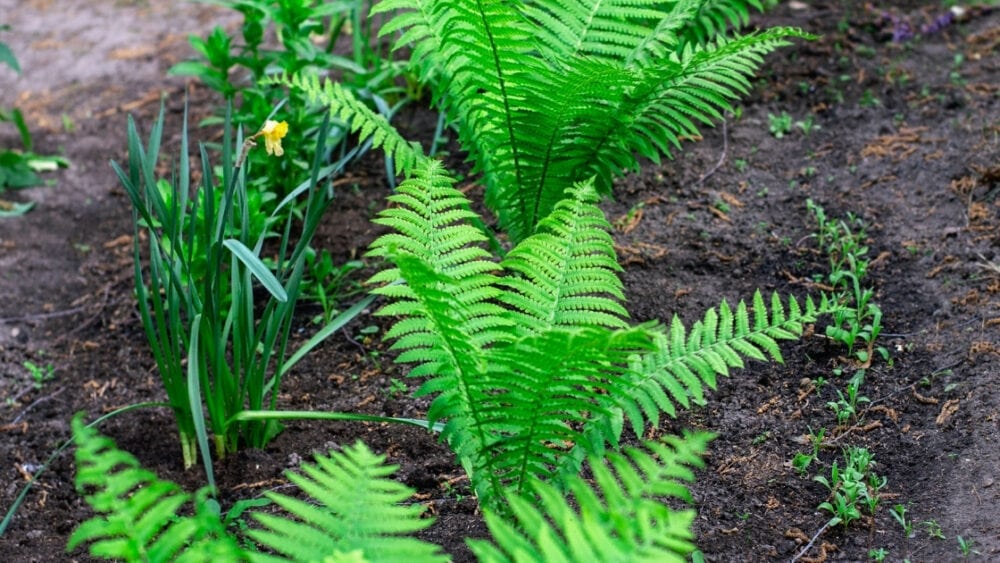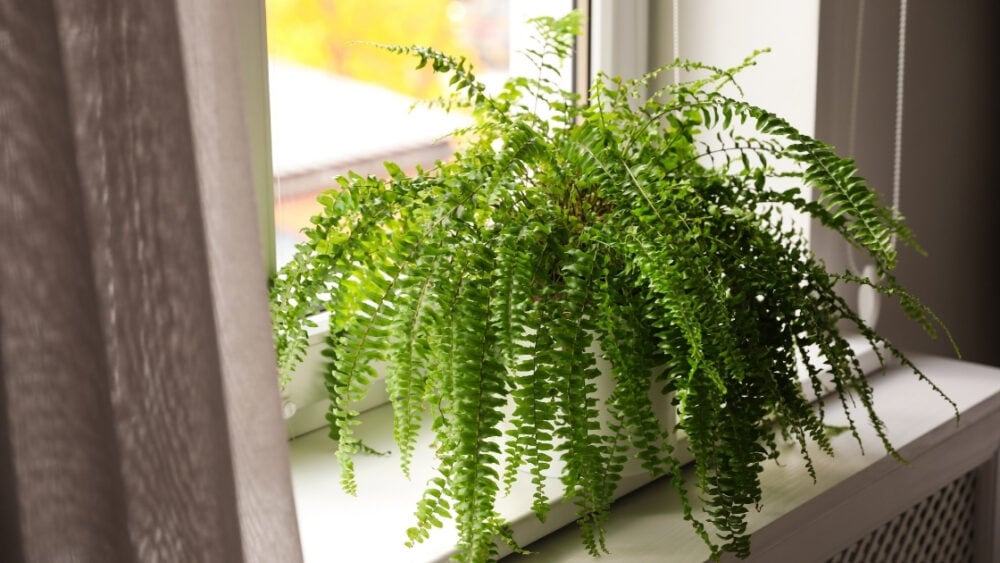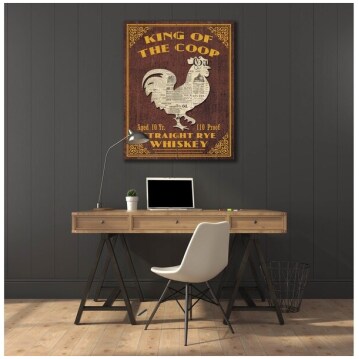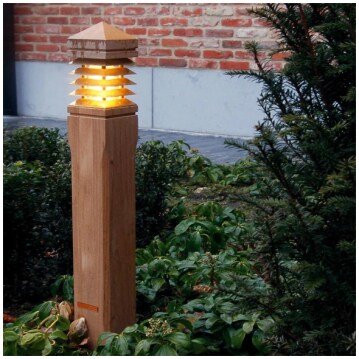
Ferns can wilt and droop for a variety of reasons such as overwatering, poor soil, root problems, and heat stress in which many varieties are affected the same. In the following paragraphs, we’ll explore what can cause your fern to wilt, how to remedy this problem and will go over the general growth requirements of ferns, which in some aspects are very different compared to most other ornamental houseplants.
Fern Growth Requirements
Although at first glance ferns look just like all other plants, they are distinctly different – unlike angiosperms (flowering plants), they don’t flower and instead produce spores. This obviously makes their propagation very different, but that’s not the only thing that’s different about ferns – they generally have much lower photosynthetic rates, resulting in slower growth, which cannot be increased by more fertilization or sunlight.
Ferns also have very low minimum light requirements and can survive in light levels 20-100 times lower (10-300 lux) than is required by most other houseplants. This can be good, because it makes ferns ideal for poorly-lit living rooms, but it can also be bad, because more sun exposure doesn’t increase their growth rate by much. Because of this, ferns are best used as ‘stationary’ indoor decorative plants that shouldn’t be expected to put out much new growth at all.
Browse our Affiliate Products
What Causes Ferns to Wilt?
In ferns, chronic wilting without apparent cause is usually associated with poor root health. This can be caused by overwatering, poor soil, or just bad luck – the roots can become diseased or infested with nematodes or other organisms that feed on them. Obviously, underwatering can also lead to wilting, but this usually resolves itself within a few hours after watering.
Overwatering
The symptoms of overwatering are usually easy to recognize in ferns – wilting is usually a secondary, late-stage symptom. At first, overwatering manifests itself as yellowing of the lower leaves and deformed leaf formation. The plant looks unhealthy and unhappy and some leaves may start falling off.
The problem usually corrects itself when less frequent watering or better drainage (which usually requires repotting in better-draining soil) is provided. Although most ferns like a constantly moist soil, they don’t like flooded root systems with no air space in between the soil particles.
Poor Soil
Most ferns can tolerate a wide pH soil range – 4 to 7, but they don’t like compacted soils. Poor drainage can lead to root rot, which in turn will quickly lead to wilting or drooping.
The best way to remedy this problem is to repot the fern in a new, more suitable soil and provide some misting afterwards while the plant recovers from the procedure. For more information on watering vs. misting check out this article. When Should I Water or Mist My Arrowhead Plants?
Make sure to check the individual soil requirements of your particular fern species, as some (like Adiantum) do require more alkaline soil.
Root Problems
Root problems include root rot, diseases, roots suffocated by lack of air and fertilizer burn. All of those eventually lead to black, unhealthy roots that start to rot and turn mushy. Eventually, the problem progresses to the base of the plant and starts to kill individual leaves.
There is no easy solution to root problems, except repotting and changing the watering schedule – allow for a drought period and see if it helps the plant bounce back. During this therapeutic drought period, provide some misting to reduce the drought stress on the foliage.
Heat stress
In ferns, heat stress doesn’t cause the same type of wilting as it does in other plants. This is due to their less ‘juicy’ and harder, more fibrous stems. Especially in Boston ferns, heat stress can cause some portion of the leaves to dry up and die even before the plant starts wilting and drooping. Nevertheless, the plants will quickly recover when moved away from the direct sun or other heat source and some misting is provided.
Other causes
Sometimes, the source of the problem may remain a mystery and various factors may be at play. Blanket solutions, like repotting and relocation of the plant to a brighter spot are a few ways to attempt to solve the problem.
Flushing of the pot with large amounts of excess water is also worth trying – this will remove most of the soluble salts accumulated in the soil, which may remove some stress from the roots.
What Causes Ferns to Droop
Short-term wilting without other symptoms (which is more likely to be referred to as ‘drooping’ instead) is more likely to be just short-term drought or heat stress. Ferns, with the exception of a few species don’t tolerate high heat and direct sunlight very well and can quickly start looking droopy. Misting usually resolves the symptoms quickly. If the drooping is more permanent and occurs while the soil is still wet, consider root problems or diseases.
Are All Fern Varieties Affected The Same?
There are more than 10 thousand fern species that range from small rosette-forming leafy plants to tall trees. Different species and varieties have very different growing habits, but wilting is usually due to the same causes – overwatering, underwatering or root problems.
Optimal Growing Conditions For Ferns
Most fern species are green ornamental plants that should not be expected to grow quickly (or at all when placed far away from a window) – they shouldn’t be fertilized too often or given direct sunlight. The exception are some tree ferns(Cyathea medullaris is a good example), which can grow quite quickly, but they are not suitable for indoor growing.
For more information on ferns, click here to read out other article. Why Are Ferns Unique?
How much sunlight do they need?
Ferns have low light requirements and can survive in poorly-lit rooms. However, they still need some light, so it’s best to place them close to a window. Most houseplants have minimum light requirements of around 5,000 lux – below this point, they stop growing and eventually experience energy deficiency and die. Certain fern species, however, can survive in light levels of around 100 lux, which is 50 times less.
Only some fern species tolerate unfiltered, direct sunlight. The cinnamon fern (Osmunda cinnamomea) is a popular example, as are all species of Athyrium and Dryopteris. Almost all ferns have poor ability to absorb CO2 from the air, which means that they don’t really grow faster when given more light – it just causes unnecessary stress on the foliage.
What temperature do ferns grow best at?
Ferns like cool temperatures of less than 75F (23C). In higher temperatures, they can experience water transport difficulties and the periphery of some of the leaves may start drying up permanently.
Misting is a nice way to offset the negative effects of higher temperatures. Most ferns can also adapt through gradual exposure and may eventually stop exhibiting heat stress symptoms, but prolonged direct sunlight may still damage their leaves. For more information on misting plants, click here, Misting Plants – Pros, Cons, and How Does It Work?
What type of soil is required?
Ferns like a constantly damp soil and mulch is often used on top of the soil surface. They don’t have special soil requirements and do well in humus-rich, well-draining soils. Most varieties prefer slightly acidic soils, but some (Adiantum) like slightly alkaline pH.
Ferns are not heavy feeders and excess fertilizer applications will not speed up growth – instead, fertilizer buildup can create various root problems, some of which may lead to wilting.
How much water do ferns need and how often should you water?
The basic houseplant rule of letting the soil dry up a bit before each watering does not apply to ferns – they like a constantly damp soil. This can be achieved with frequent applications of small amounts of water – something which can be very dangerous for most other houseplants.
This is a rule that applies to most ferns, but not all of them. Desert ferns still like a drought period and their roots can be harmed by constant moisture.
Can you plant ferns directly outdoors in your garden?

Ferns are suitable for shade gardens – in nature, they grow in the shade of tall trees and prefer sheltered, humid and non-windy locations. Planting ferns in a sunny spot is not recommended, unless the particular species can deal with those conditions – this is the case with some tree ferns like Cyanthea.
Do they grow better indoors or outdoors?
Ferns will grow slowly regardless of light levels, so they are very suitable for use in indoor decoration. They are probably the only category of houseplants that can tolerate and survive in poorly-lit indoor areas with light levels of less than 1,000 lux.

However, they still do best when placed near a window in diffuse light. It’s not recommended that you bring hanging fern pots outdoors during the summer- this won’t speed up their growth and the plants may quickly start showing irreversible necrotic spots of sun damage.
My Fern is Dying! How Do I Save It?
The best way to revive a sick fern plant is to repot it and then move it to a different location. This is a general ‘blanket’ solution that works best for most problems, including root rot, heat stress or infestations of the root system with various pathogenic nematodes or insects.
Depending on the condition your fern is in, it can take a long time for it to bounce back after repotting – up to a few weeks. Some ferns, like the Boston fern can put out new growth even after being completely cut down.
Do Ferns Tolerate Unfavorable Conditions Well and How Can You Compensate For Them?
Ferns tolerate low-light conditions very well. A condition they can’t tolerate is poor, very compacted or overly alkaline soil, but this is also species-dependent. A common mistake is to try and speed up the growth of ferns by generous fertilization – usually, this doesn’t help at all and can only lead to root damage.
There is not much you can do to help a shade-loving fern thrive in hot, direct sunlight – they don’t have the vascular system to deal with this kind of sudden heat stress.
Final Thoughts
Ferns most often wilt due to watering issues. The problem can either be temporary or more permanent. For temporary wilting, some misting and moving away from the heat will solve the problem. For long-term wilting problems, root health is usually to blame – consider repotting the plant in a new, healthy soil. Most fern species are not suitable for growing in direct sunlight and do best in indoor hanging pots near a window.















